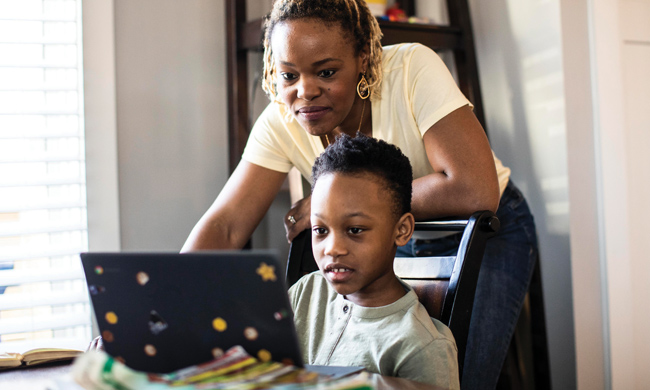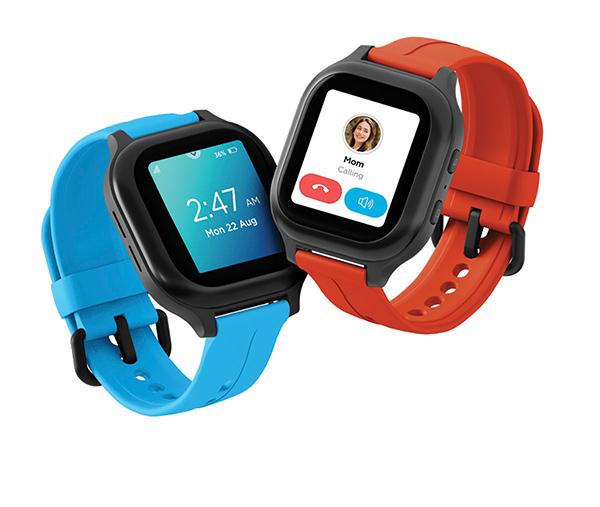child education
Get Smart About Sustainability: Tips for teaching kids earth-friendly habits
Connecting sustainability lessons to your child’s daily life, like school, can help them understand and establish earth-friendly habits from a young age.
Last Updated on July 27, 2024 by Daily News Staff
(Family Features) For many parents, their interest in sustainability and earth-friendly living is driven by a desire to create a better world for their children. Taking personal action and responsibility are part of the solution but teaching the next generation to be environmentally conscious is an important part of the equation, too.
Connecting lessons about sustainability to familiar aspects of your child’s daily life, like school, can makes it easy for him or her to understand and establish earth-friendly habits from a young age. Here are some ideas for promoting sustainable behaviors this school year:
Be smart about supplies. Before restocking your student’s supplies, take inventory of what you have left over from last year. Your student probably had several items with plenty of life left, or things that were bought as backups, so you can avoid waste and save a little money while reducing your consumption of unnecessary goods.
Model good habits. Kids learn by example, so know they’re watching and internalizing your behaviors. If you’re not already practicing these habits, make an intentional effort to turn lights off before you leave the house each morning, turn off the water while brushing teeth, use alternate energy sources around the house and encourage your school district to adopt sustainable practices, such as propane-powered buses.
Reduce food-based waste. Convenient, single-serve packaging makes assembling school lunches a breeze, but all that extra wrapping is waste that ends up in the landfill. Other options, like buying in bulk and sending treats in reusable plastic bags, is a more earth-friendly approach. Bento-style boxes with compartments for different foods are another option to help make lunchtime more sustainable. Similarly, encourage your child to carry a water bottle at school each day, which reduces water fountain waste (and cuts back on his or her exposure to germs).
Enjoy nature together. As temperatures cool, it’s a terrific opportunity to spend quality time outdoors as a family. Showing your child reasons to appreciate nature can make it easier for him or her to understand and provide motivation to make choices that protect the earth.
Reinforce with reading. Multiple studies reinforce the benefits of reading with and to young students. Selecting books with earth-positive messaging helps them explore new ideas for sustainable living and see how beloved characters embrace values similar to those your family shares.
Safer, Smarter Bus Transportation
The way kids ride to school today is very much the way children traveled to school 25 years ago: in aging diesel school buses. However, diesel school buses are not only expensive to operate, but they pose risks to children’s health, the community and the climate.
Today, there are two main options for clean student transportation: propane and electric. While both can reduce emissions, propane can do it at a fraction of the cost.
Every day, 1.3 million American children ride to school in 22,000 propane-powered school buses. Propane buses are currently in 1,000 school districts in 48 states. That’s only about 5% of the nation’s total buses, but the number is growing. These are some of the reasons more districts are moving to propane-powered transportation:
Student Health and the Environment
The cloud of black smoke that comes from the tailpipe of a diesel bus contains harmful emissions that are classified by the World Health Organization as a carcinogen and are known triggers for issues like asthma, bronchitis and other respiratory problems, according to the Environmental Protection Agency. Propane school buses lower those emissions to near-zero levels, which improves air quality and eliminates concerns about breathing-related issues. In fact, according to a study by Georgia State University, students who ride to school on a low-emissions bus, like propane, had higher test scores than those who rode on diesel buses.
Compared to electric, propane buses provide a lower lifetime carbon option. That includes emissions that take place before the wheels start turning on the road, like charging a bus using the electric grid versus refueling it with propane. Coal and natural gas are still America’s primary sources of energy for electricity generation and drive up emissions.
Cost Savings
Three times less expensive than electric buses, the cost of a propane school bus and its refueling infrastructure is one of the most affordable options for school districts.
School districts can save money throughout the lifetime of propane buses, which cost 30-50% less per mile to operate than diesel, according to the Propane Education & Research Council. What’s more, a World LP Gas Association study found replacing diesel buses with propane buses would save enough money to hire 23,000 new teachers.
Reliability
While electric vehicles make sense for several uses, propane has the fuel range and performance needed for large vehicles that drive long distances without stopping to recharge or refuel. A typical propane school bus can drive more than 2.5 times farther on a full tank than a comparable electric school bus can drive on a full charge.
Find more information about clean school bus operation at BetterOurBuses.com.
SOURCE:
Propane Education & Research Council
https://stmdailynews.com/category/lifestyle
Discover more from Daily News
Subscribe to get the latest posts sent to your email.
Blog
The Substitute Teacher Who Wanted Blueprints of Our House
A fifth-grade assignment took a strange turn when a substitute teacher asked students to draw schematics of their homes. What followed — a wildly fictional floor plan and a priceless reaction from my mom — turned into one of my funniest childhood memories.
Last Updated on December 8, 2025 by Daily News Staff
The Substitute Teacher Who Wanted Blueprints of Our House
Elementary school memories tend to blend together — cafeteria pizza, playground arguments, the eternal struggle of times tables — but every once in a while, something happens that sticks with you for life. For me, that moment came in the fifth grade during a week when our regular teacher was out, and we cycled through substitute teachers like we were testing models for durability. By midweek, in walked a substitute with a mysterious, slightly intense energy — the kind of vibe that suggested he either meditated at dawn or worked a graveyard shift doing something he couldn’t talk about. We settled into our seats, expecting worksheets or quiet reading time. But nope. He had other plans. “Today,” he announced, “we’re going to draw schematics of our houses.” Schematics. Not drawings. Not little houses with smoke coming out of the chimney. Actual blueprint-style schematics. He wanted the layout of our bedrooms, our parents’ rooms, and where the pets slept. Every detail. Now, to be fair, Highlights Magazine did have a feature that month teaching kids how to draw floor plans. So maybe he was just a bit overenthusiastic about cross-curricular learning. Or maybe — and this is my completely rhetorical adult theory — he worked the graveyard shift as a cat burglar gathering intel between heists. Just moonlighting between blueprints. While the rest of the class tried their best to recreate their actual homes, my imagination sprinted in a totally different direction. The house I drew had:- A massive master bedroom with an oversized bathroom for my parents
- Separate bedrooms for us kids on the opposite side of the house
- A kitchen placed right in the center like a command center
- And the dog — the true VIP — had a luxurious two-story doghouse
Enjoy this story?
Check out more nostalgic and humorous stories on STM Daily News and be sure to sign up for our newsletter!Our Lifestyle section on STM Daily News is a hub of inspiration and practical information, offering a range of articles that touch on various aspects of daily life. From tips on family finances to guides for maintaining health and wellness, we strive to empower our readers with knowledge and resources to enhance their lifestyles. Whether you’re seeking outdoor activity ideas, fashion trends, or travel recommendations, our lifestyle section has got you covered. Visit us today at https://stmdailynews.com/category/lifestyle/ and embark on a journey of discovery and self-improvement.
Discover more from Daily News
Subscribe to get the latest posts sent to your email.
Lifestyle
Preparing for the Future of Work: Tips to help teens choose a career path
Preparing for the Future of Work: American teens are optimistic about their careers despite concerns over AI’s impact. Many value internships and real-world experience over degrees, and are weighing passion against pay, seeking balance in their future career choices.
Last Updated on December 2, 2025 by Daily News Staff
Preparing for the Future of Work: Tips to help teens choose a career path
(Family Features) American teens are preparing for a workforce shaped by AI, new approaches to education and economic uncertainty. While challenges are real, optimism remains high.
In fact, 94% of teens said they are optimistic about their future careers, reflecting a strong sense of hope and ambition, according to research from Junior Achievement and Citizens. The two organizations have partnered for more than 18 years to advance financial empowerment nationwide, with the bank allocating funding and volunteer support, including more than $630,000 in 2025 to support financial empowerment programs that give people the confidence and tools they need to budget, save, invest and pursue their goals.
However, 57% of teens surveyed believe AI has negatively impacted their career outlook, raising concerns about job replacement and the need for new skills.
“Today’s teens face a rapidly changing world, from the rise of AI to shifts in education and careers,” said Susan LaMonica, chief human resources officer at Citizens. “The survey shows they know the importance of adaptability and continuous learning.”
To help teens build skills for emerging roles and navigate their futures, consider these tips from the experts at Junior Achievement, the world’s largest organization dedicated to giving young people the knowledge and skills they need to own their economic success, plan for their futures and make smart academic and economic choices.
Explore Internships
Success depends on more than credentials alone. Survey respondents believe networking (50%) and internships (41%) are keys to future success. What’s more, 56% believe real-world experience is more valuable than a four-year degree. Internships can provide that experience and allow students to test their interest in a field while building their professional networks, developing skills that can be applied to a range of career paths, identifying strengths and weaknesses and clarifying future goals.
Consider Post-High School Education
Teens’ perspectives on education reflect their uneasiness. Only 40% of teens surveyed believe a four-year degree is always a good investment. At the same time, about 6 in 10 believe a bachelor’s or graduate degree is still necessary for their chosen profession, which shows how complicated these decisions can be. While many careers require a college diploma, that isn’t the only path to career success. In addition to traditional four-year universities, consider alternate education paths such as trade schools or technical programs, apprenticeships, two-year degree programs or professional certifications if applicable to your career path.
Weigh Passion Against Pay
While most teens surveyed (63%) said they would prefer a good-paying job even if it comes with stress, many are weighing passion against pay as they explore career opportunities. In fact, some top industries in which teens plan to pursue a job include health care and life sciences (30%), arts and music (27%) and content creation and digital media (25%), further showcasing that willingness. Many students are also exploring less traditional routes to build security and opportunity, with 87% expecting to earn extra income through side hustles, gig work or social media content creation.
“The data illustrates how the stressors on young people are compounding year after year,” said Tim Greinert, president of Junior Achievement USA. “It also shows how resilient and savvy students are these days in terms of understanding the world around them and deciphering the best path to the future that’s best for them.”
To learn more about preparing for future success and find full survey results, visit JA.org/FutureOfWork.
Photo courtesy of Shutterstock
SOURCE:
STM Daily News is a vibrant news blog dedicated to sharing the brighter side of human experiences. Emphasizing positive, uplifting stories, the site focuses on delivering inspiring, informative, and well-researched content. With a commitment to accurate, fair, and responsible journalism, STM Daily News aims to foster a community of readers passionate about positive change and engaged in meaningful conversations. Join the movement and explore stories that celebrate the positive impacts shaping our world.
Discover more from Daily News
Subscribe to get the latest posts sent to your email.
Lifestyle
Tech Time: Technology-enabled devices for parents and children
Last Updated on November 3, 2025 by Daily News Staff
(Family Features) Encouraging a successful education for your kids while promoting fun after-school learning may never be easier than right now. From wearables to virtual reality headsets and beyond, the latest tech-enabled devices let families enhance classroom experiences while engaging in downtime together after the final school bell rings.
Find more gadgets to help families balance learning and pleasure this school year at qualcomm.com.
First Work Then Play
A practical choice, the Lenovo Duet 3 Chromebook is an ideal work and play device for a hyper-mobile student, delivering superior experiences with an 11-inch 2K near-borderless display. Faster connectivity options, all-day battery life and the powerful, fanless and efficient performance of the Snapdragon 7c Gen 2 Compute Platform ensure things get done. Thanks to the speedy, secure and simple-to-use Chrome OS, you can tackle tasks on this 2-in-1’s detachable keyboard with anti-pry, water-resistant keys then seamlessly switch to pleasure pursuits by folding into tablet mode.
Lightweight, Powerful Computing
Weighing in at less than 1.2kg, the convertible Acer Chromebook Spin 513 is not only light but also barely larger than a sheet of paper so it slips easily into any compact bag or backpack. Powered by the Snapdragon 7c Compute Platform, it delivers more than enough processing power, battery life and reliable connectivity to get you or your student through the day. A quick flip between laptop and tablet modes means it can be used to doodle, watch classroom instruction and learn on the go. Built-in cellular connectivity means the device seamlessly converts between 4G LTE and trusted Wi-Fi networks.
Wearable Connectivity
Powered by the Snapdragon Wear 2500 Platform, the Gabb Watch is a safe wearable phone for kids that does extra duty as a GPS tracker, phone and interactive smartwatch. The watch offers kid-friendly sweat and dirt resistance and enables GPS tracking, calling, voice and text messaging to help parents and kids stay connected. With a lock mode, safe zone location management and emergency notifications, it’s a smart first step toward independence for junior users.
Headset Hero
Designed from the ground up to drive advanced features, Snapdragon XR2 is the force behind the Meta Quest 2 headset’s freedom of movement and high-resolution display. This headset allows families to become completely immersed in the virtual reality applications and games played for maximum adventure experiences. Even better, hundreds of hit games, one-of-a-kind experiences and a growing community await users of this next-level hardware that’s both easy to set up and safe to use.
A Phone to Keep Everyone Connected
Choosing a phone means looking for the fastest speeds, highest resolution camera, loudest audio and boldest display.Powered by the latest Snapdragon 8 Gen 1 Mobile Platform processor, the motorola edge+ (2022) delivers. This industry-leading smartphone is a high-performance choice that brings unparalleled processing power on the industry’s fastest mobile platform, fueling cutting-edge 5G, AI, gaming, camera and Wi-Fi and Bluetooth technologies. What’s more, features like extended battery life and 512 GB of storage mean your phone is ready whenever you are.
Photo courtesy of Getty Images (Mom and Son)
SOURCE:
Qualcomm
Our Lifestyle section on STM Daily News is a hub of inspiration and practical information, offering a range of articles that touch on various aspects of daily life. From tips on family finances to guides for maintaining health and wellness, we strive to empower our readers with knowledge and resources to enhance their lifestyles. Whether you’re seeking outdoor activity ideas, fashion trends, or travel recommendations, our lifestyle section has got you covered. Visit us today at https://stmdailynews.com/category/lifestyle/ and embark on a journey of discovery and self-improvement.
Our Lifestyle section on STM Daily News is a hub of inspiration and practical information, offering a range of articles that touch on various aspects of daily life. From tips on family finances to guides for maintaining health and wellness, we strive to empower our readers with knowledge and resources to enhance their lifestyles. Whether you’re seeking outdoor activity ideas, fashion trends, or travel recommendations, our lifestyle section has got you covered. Visit us today at https://stmdailynews.com/category/lifestyle/ and embark on a journey of discovery and self-improvement.
Discover more from Daily News
Subscribe to get the latest posts sent to your email.

